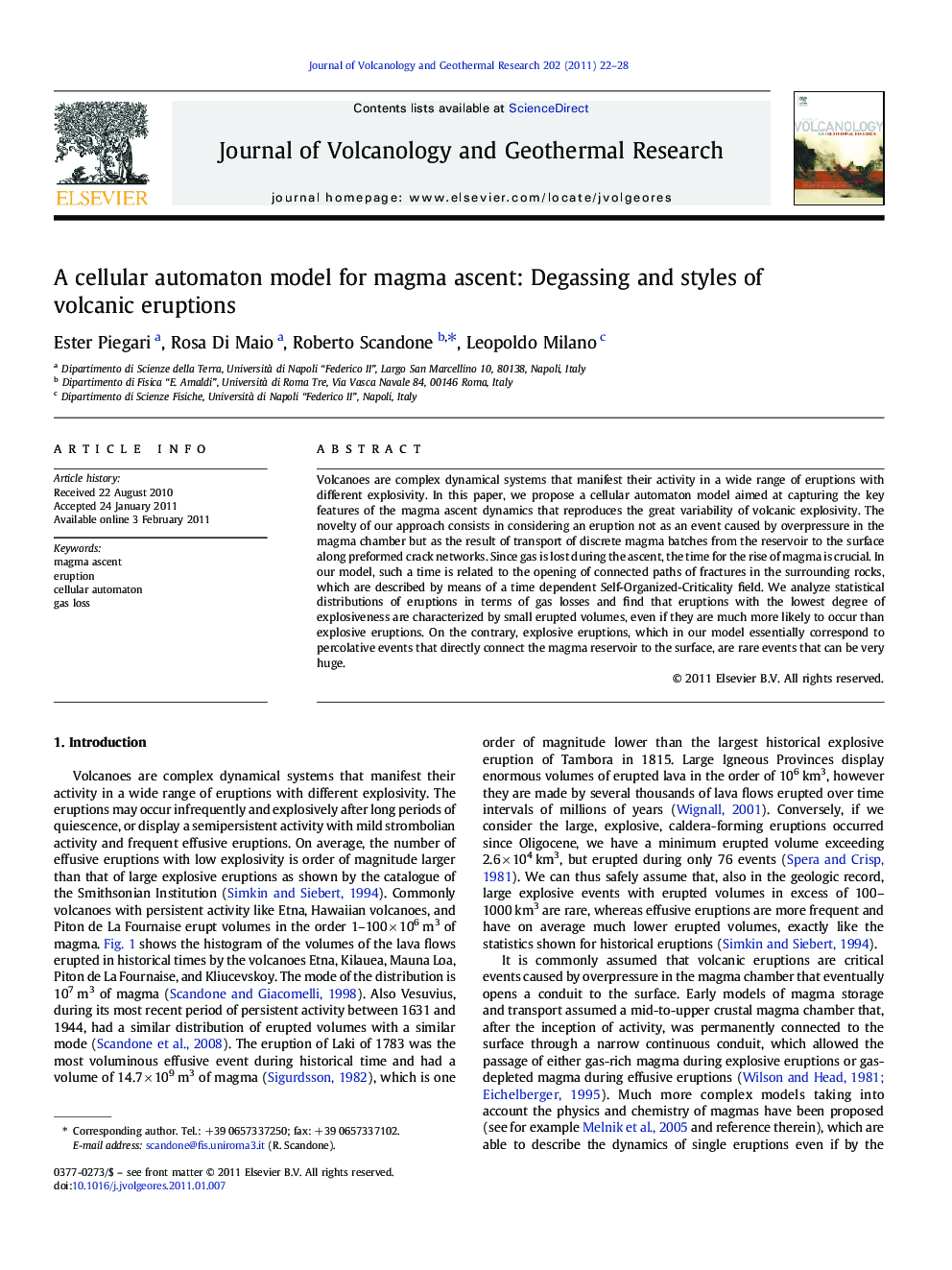| Article ID | Journal | Published Year | Pages | File Type |
|---|---|---|---|---|
| 4712844 | Journal of Volcanology and Geothermal Research | 2011 | 7 Pages |
Volcanoes are complex dynamical systems that manifest their activity in a wide range of eruptions with different explosivity. In this paper, we propose a cellular automaton model aimed at capturing the key features of the magma ascent dynamics that reproduces the great variability of volcanic explosivity. The novelty of our approach consists in considering an eruption not as an event caused by overpressure in the magma chamber but as the result of transport of discrete magma batches from the reservoir to the surface along preformed crack networks. Since gas is lost during the ascent, the time for the rise of magma is crucial. In our model, such a time is related to the opening of connected paths of fractures in the surrounding rocks, which are described by means of a time dependent Self-Organized-Criticality field. We analyze statistical distributions of eruptions in terms of gas losses and find that eruptions with the lowest degree of explosiveness are characterized by small erupted volumes, even if they are much more likely to occur than explosive eruptions. On the contrary, explosive eruptions, which in our model essentially correspond to percolative events that directly connect the magma reservoir to the surface, are rare events that can be very huge.
Research Highlights►Proposes a new model on magma ascent based on a cellular automaton and the implication on the styles of eruption. The paper intends to be a first step toward a more complex modeling of magma ascent within the feeding system of a volcano. ►The model attempts to reproduce the temporal evolution of the activity of a volcano and its wide spectrum of activity. ►We check the result of the model against the known catalogues of volcanic activity.
